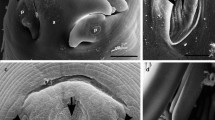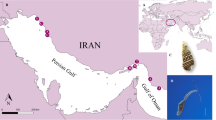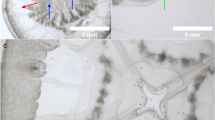Abstract
ABOUT 190 species of Acanthocephala occur in birds, but the life-histories are known only in five species. In all known cases the life-cycle is indirect.
This is a preview of subscription content, access via your institution
Access options
Subscribe to this journal
Receive 51 print issues and online access
$199.00 per year
only $3.90 per issue
Buy this article
- Purchase on Springer Link
- Instant access to full article PDF
Prices may be subject to local taxes which are calculated during checkout
Similar content being viewed by others
References
Thom, V. M., and Garden, E. A., Fair Isle Bird Observ. Bull., 2 (7), 325 (1955).
Harrison, J. N., Bull. Brit. Ornith. Club, 75 (9), 121 (1955).
Rayski, C., Proc. Fifteenth Int. Cong. Zool., 676 (1959).
Petrochenko, V. I., Acanthocephala of Domestic and Wild Animals, 1 (Moscow, 1956); 2 (Moscow, 1958).
Author information
Authors and Affiliations
Rights and permissions
About this article
Cite this article
RAYSKI, C., GARDEN, E. Life-cycle of an Acanthocephalan Parasite of the Eider Duck. Nature 192, 185–186 (1961). https://doi.org/10.1038/192185a0
Issue Date:
DOI: https://doi.org/10.1038/192185a0
This article is cited by
Comments
By submitting a comment you agree to abide by our Terms and Community Guidelines. If you find something abusive or that does not comply with our terms or guidelines please flag it as inappropriate.



